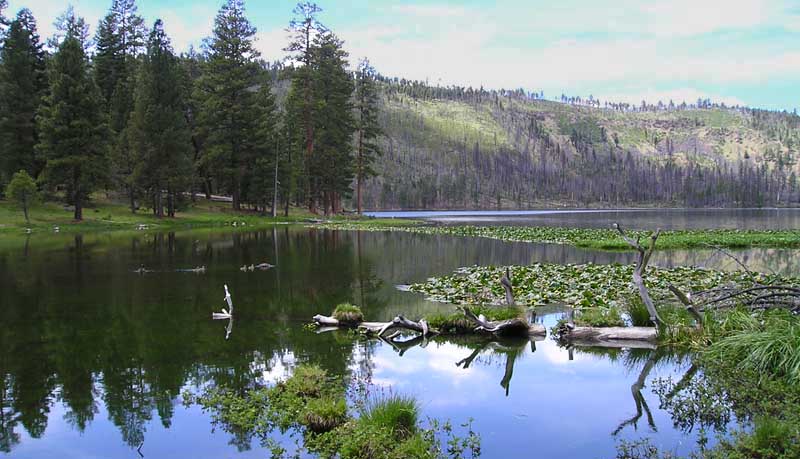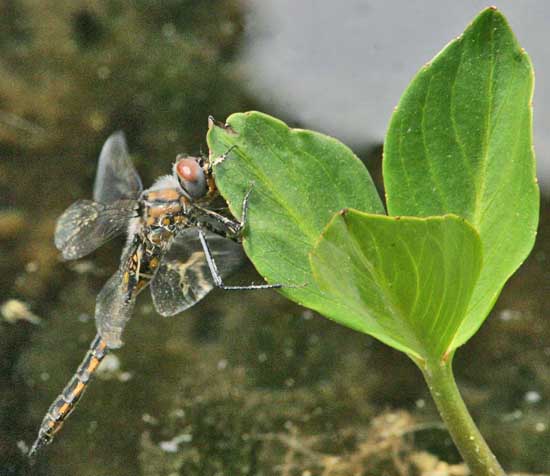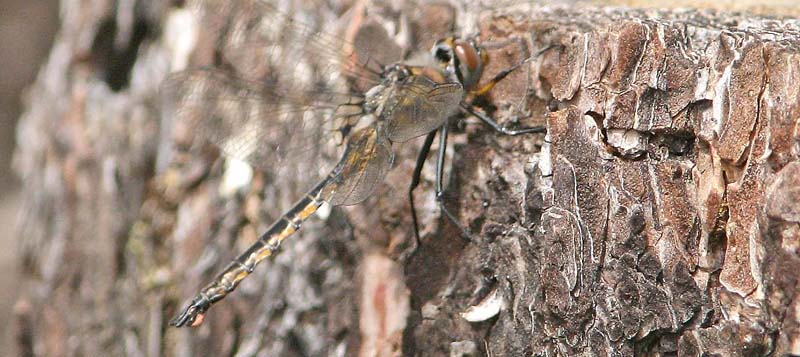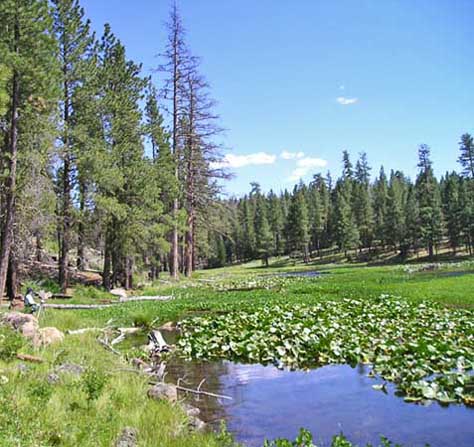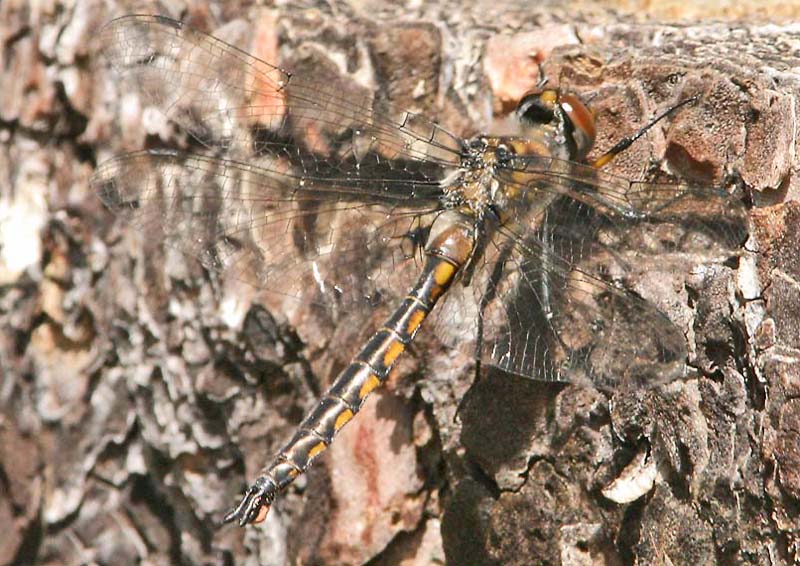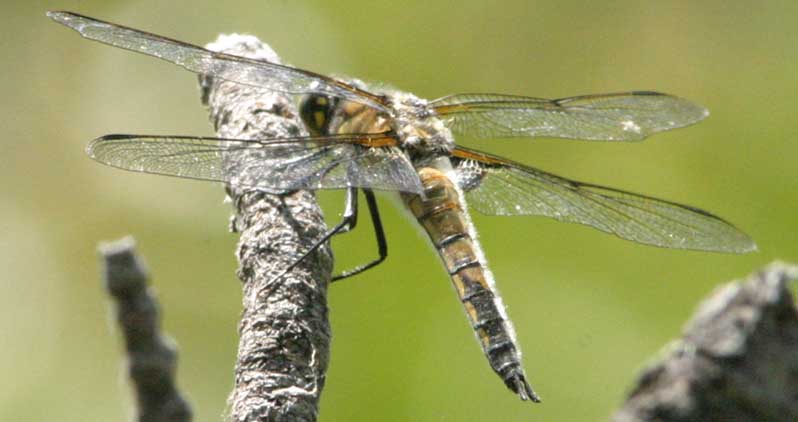| |
|
|
Blue Lake is a beautiful montane
lake, surrounded by coniferous forest within Modoc National Forest, in
extreme northeastern Lassen County. A campground (pit
toilets, non-potable water) is maintained by the Forest Service. The
lake is reached primarily from Likely, Modoc Co., via an easy half-hour
drive on paved Jess Valley Road, which follows the south fork of the
Pit River upstream for a distance. There is a 26-mile dirt road east
and then north from Madeline, Lassen Co., that also goes here, but it
is slow, rutted, and rough.
We'd camped at Blue Lake on a birding trip before,
and we had Gray Jays in the campground and a Northern Goshawk over a
meadow adjacent to the lake.
A forest fire in 2003 burned much of the hillside
on the east side of the lake (the area across the lake in the photo
above shows much burned timber) but does not appear to have affected
either bird, or ode, abundance and diversity.
|
|
For California odites, Blue Lake is
famous because it is the only locale within the State at which Spiny
Baskettail Epitheca spinigera can be found. This
boreal species is widespread across northern North America but was
known in California only from a few 1914 specimens at Donner Lake,
Nevada Co., before Tim Manolis discovered it at Blue Lake in 1999. Tim
also watched a mass emergence in early June 2001, and David
Edwards/John Hall saw it here in June 2005. I've never seen a photo
from California posted.
I photographed this emerging female
(right) on 8 June 2007, and found exuviae nearby. This was among the
lily pads shown in the photo above. Several other baskettails were
barely flying — one was such a novice that it fell in the lake and had
to swim to the nearest lily pad. A male was seen to land on the stump
of a tree (photos below).
|
|
|
|
|
|
|
An i.d. problem here involves Four-spotted Skimmer Libellula
quadrimaculata (right & below), a common montane species. The
baskettail and skimmer both have a brown and hairy thorax (with yellow
patches when young); clear wings; dark brown eyes when young; an
abdomen than looks thicker in the middle; and rather similar
appendages. Points that I found useful:
- on the skimmer, black nodal spots & yellow
leading edge to wings, out to the stigma
- prominent yellow-brown triangle at base of hind wings
to skimmer (both species can have variable black here),
- longer abdomen to baskettail, and
- pale base to front legs on baskettail.
|
|
| |
|
|
| The baskettail and the skimmer typically
behave differently, with the skimmer mostly foraging from perches while
the baskettail flies long patrols out over the water, but baskettails
may perch at water's edge when emerging and skimmers will fly short
patrols, so these points are not as conclusive as I had initially
thought they would be. Older male skimmers (above) lack yellow dots on
the abdomen, but younger skimmers have a series of yellow dashes. |
|
Blue Lake has nice diversity of other odes. On 8
June 2007, my list was:
- Vivid Dancer 12
- Boreal/Northern Bluet 10 (a male caught was
Boreal)
- Pacific Forktail 50
- Western Forktail 25
- Calif Darner 2 male
- Spiny Baskettail 4 tenerals
On 5 July 2007, Rita and I had:
- Vivid Dancer 5
- Boreal/Northern Bluet 80 (right)
- Tule Bluet 10
- Pacific Forktail 25
- Western Forktail 40
- mosaic darner 2 in flight, possibly Variable
- Spiny Baskettail 2 in flight out over lake
- Western Pondhawk 25
- Dot-tailed Whiteface 1 male (right & below)
- Common Whitetail 10
- Four-spotted Skimmer 20
- Eight-spotted Skimmer 20
- Twelve-spotted Skimmer 2
- Variegated Meadowhawk 1 male
|
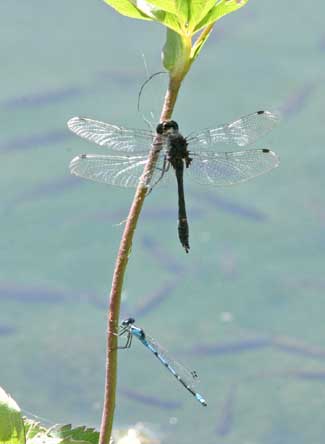
|
|
|
|
| |
| |
|
|
